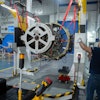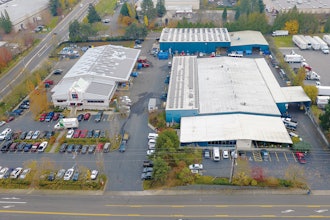I happened to be reading through some old company documents the other day.
This particular document was a photocopy of an engineering technical note written by a field engineer. The document was undated, but judging by the typewriter type and the faint outline of a three-hole punch along the border, I would guess it had been written in the 1970s.
Titled Vol. 2, No. 41, the document contained two tips for field engineers. One dealt with the rim speed of variable-speed sheaves. It concluded with this sentence: “The customer should be shown that the rim speed of a driveN sheave can be considerably greater than the belt speed on this type of drive.”
The second tip dealt with the dangers of attaching a belt drive to a jackshaft hanging in the air. It concluded with this safety hint: “When working around machinery, keep your necktie tucked in your shirt, or take the darned thing off. Trailing neckties have been known to be fatal!”
Now, around our place, engineers don’t wear neckties any longer. Especially the ladies; but this technical note reminded me that they still provide customers with tips and insight that can only come from field experience and deep knowledge of a specific discipline.
And that made me think about a research statistic that I heard recently: On a typical project, the average design engineer will be working in three to four different engineering disciplines.
So the question arises. How proficient can anyone be in any given discipline in such a cross-disciplinary environment?
And that leads to another question. Where do you go for help when you reach the limits of your knowledge and experience in a discipline that’s not your own?
You may immediately think of colleagues, industry associations, or universities.
But seeing that old technical note from the 1970s made me realize how much expert help is available to design engineers from suppliers.
So I started digging around to compile a list of the free technical assistance that our company provides to customers who may be struggling with a power transmission design problem. Here’s the list:
- Product application engineers accessible via phone, email, and chat.
- Engineered belt drive design services.
- Downloadable belt drive design software.
- Drive analysis and troubleshooting.
- Support for installation and preventive maintenance tools.
- On site belt drive engineering services.
- Product information.
- Industrial part interchange assistance.
There’s even more, including videos, catalogs, product application or technical notes, white papers, a blog, fact sheets, and parts drawings downloadable as CAD files.
I’m sure that what we offer by way of free technical assistance is comparable to what any major supplier offers.
Here’s the point. When you’re up against the wall on a design problem, think about who supplies the components for the sub-system you’re working with. Then get in touch with their application engineers.
They are likely to have seen the problem before, and can offer a solution in a fraction of the time it would take you to work it out on your own.
Now, back to the belt drive attached to the hanging jackshaft in our 1970s technical note. Our field engineer apparently scratched his head in wonder at how the drive had been configured, and finally drew a conclusion: “We don’t recommend the practice because of possible vibration and belt breakage, which could prove to be very dangerous….Still, somebody has evidently tried it – and it worked!”
You can read more blog posts from Brent and other product application engineers at the Gates Belts & Applications blog.
What are your thoughts? Post your comments below or send them to [email protected].























